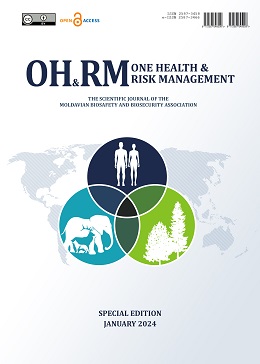Abstract
Introduction. Urinary tract infections are among the most common bacterial infections in children. Limited data on the pharmacokinetic and pharmacodynamic characteristics of antibacterial drugs in pediatric patients may lead to their excessive and irrational use, resulting in the development of complications. Currently, there is an alarming level of antimicrobial resistance among causative pathogens due to the inappropriate and widespread use of antibacterials. Resistant infections are associated with higher morbidity, mortality, and increased healthcare costs.
The aim of this study was to identify the causative pathogens of urinary tract infections in children and analyze their susceptibility to antibacterial preparations for optimal therapeutic management.
Material and methods. This analytical-retrospective study involved analyzing the results of bacteriological urine examinations in children admitted to the specialized wards of Valentin Ignatenco Children’s Municipal Clinical Hospital in 2022, focusing on the identification of microorganisms and evaluation of susceptibility to antibacterial preparations.
Results. According to the data obtained, 39% positive urocultures were identified in children and the most common pathogen detected was Escherichia coli (43% cases), followed by Staphylococcus epidermidis (40%), Enterococcus (6%), Proteus mirabilis (5.5%), Klebsiella pneumoniae (4.5%), Pseudomonas aeruginosa (1%). Escherichia coli showed resistance to cephalosporins-cefaclor (47%), cefuroxime (51%), ceftazidime (40%), cefoperazone (61%), fluoroquinolones-ciprofloxacin (52%), ofloxacin (62%) and, amoxicillin/clavulanic acid in 42% cases. Staphylococcus epidermidis detected in 39% cases, was resistant to ceftriaxone (33%), ceftazidime (28%), cefuroxime (31%), ciprofloxacin (37%), amoxicillin/clavulanic acid in 53% cases. Enterococcus was resistant to ceftriaxone (32%), cefuroxime (37%), cefaclor (30%), ciprofloxacin (29%), ofloxacin (35%), amoxicillin/clavulanic acid (22%). Klebsiella pneumoniae was resistant to ceftazidime (35%), cefoperazone (27%), ceftriaxon (23%), cefuroxime (31%), cephalexin (27%), ciprofloxacin (38%), ofloxacin (46%), amoxicillin/clavulanic acid (27%), and Pseudomonas aeruginosa was resistant to ceftazidime (27%), ceftriaxon (20%), cefuroxime (40%), cephalexin (27%) ciprofloxacin (47%).
Conclusions. Urinary tract infections in children pose a significant challenge due to the specific features of the pediatric population, including the difficulty in conducting studies, limited therapeutic options, contraindications, variability of causative pathogens, and increased resistance to antibacterial therapy. Escherichia coli was the most commonly detected pathogen, with an elevated rate of resistance to amoxicillin/clavulanic acid and cephalosporins, which are commonly used for the treatment of urinary tract infections in children. Rational selection of antibacterials is essential to ensure effective and safe treatment and to prevent urinary tract infections with multidrug-resistant agents.
|
 Views: 264|
|
Views: 264|
|
This work is licensed under a Creative Commons Attribution 4.0 International License.

